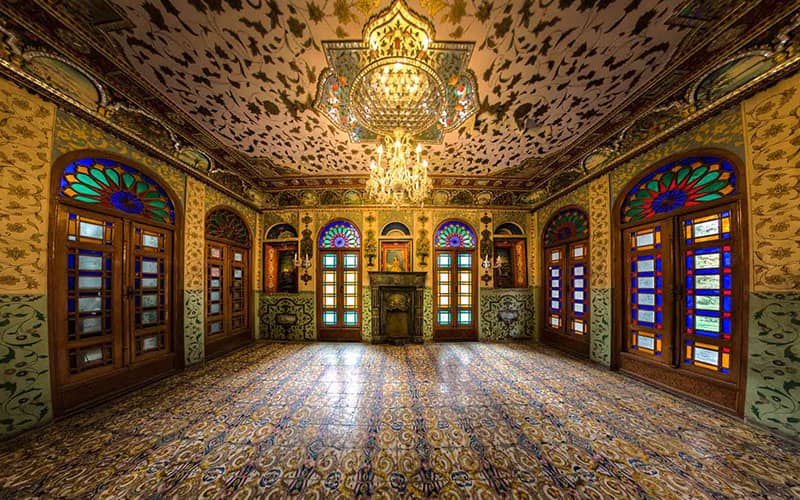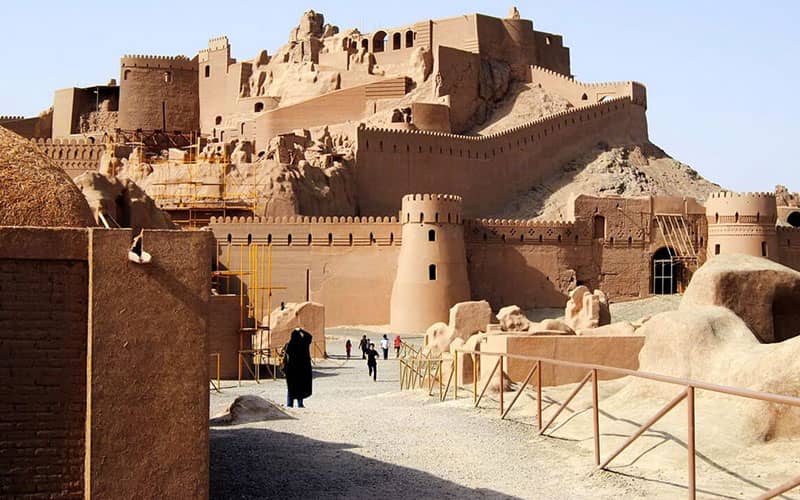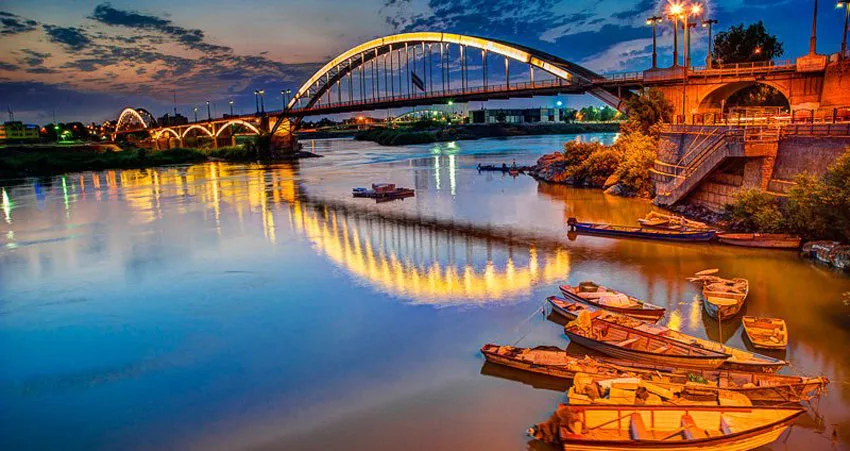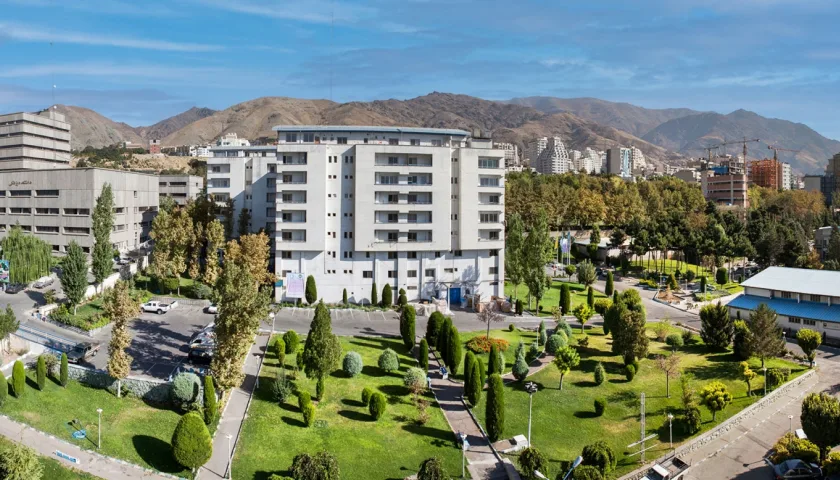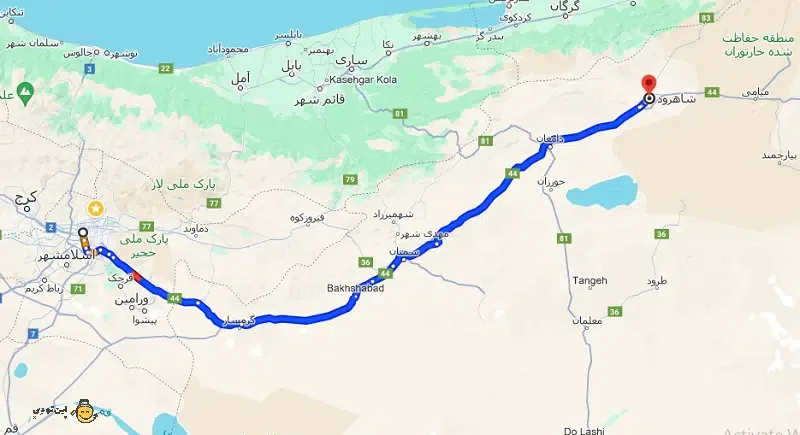Golestan Palace: A Glimpse into Persian Royalty
“Golestan Palace, one of Iran’s UNESCO World Heritage Sites, is renowned for its unique architecture and exquisite decorations, making it an ideal location for capturing incredibly beautiful images. This valuable structure was listed in Iran’s National Heritage in 1334 and UNESCO’s World Heritage List in 1392. Beyond its architectural significance, the palace holds a living record of Iran’s history due to significant historical events that have taken place within its walls. Situated in the old fabric of Tehran, Golestan Palace is easily accessible by public transportation, providing a mesmerizing experience of Iran’s history, architecture, culture, and art.
To gain comprehensive information about Golestan Palace, join us in exploring this article from Gulf City Pedia.
Learn more about Golestan Palace:
Where is Golestan Palace located?
Visiting hours of Golestan Palace
History of Golestan Palace
Architecture of Golestan Palace
Library of Golestan Palace
Virtual tour of Golestan Palace
Golestan Palace film
Facilities and services at Golestan Palace
Introduction to Golestan Palace
Palace grounds and the large pool

Where is Golestan Palace located?
Golestan Palace comprises a collection of historical buildings in the Tehran province, constructed at various times. It stands as one of the most important historical landmarks in the country, attracting domestic and international tourists throughout the year. The palace complex includes structures such as Marble Throne Veranda, Salam Hall, Mirror Hall, Banquet Hall, Kharim Khani Nook, Brilliant Hall, Windcatcher Building, Shams al-Amareh Palace, Diamond Hall, and the White Palace. The Marble Throne Veranda and Kharim Khani Nook date back to the Karim Khan Zand era, making them the oldest structures in the Golestan complex.
In addition to the mentioned buildings, the Golestan cultural and historical complex includes various sections such as the manuscript library, visual documents center, manuscript documents center, technical office, international affairs, printed library, cultural affairs, introduction affairs, children and youth unit, and the legal office.
There are numerous attractions around Golestan Palace, including Tehran Bazaar, Haj Ali Darvish Coffeehouse, Sabzeh Maidan, Nasser Khosrow Street, Saraye Roshan, Marvi Alley, and Darolfonoun.
Area of Golestan Palace
Golestan Palace, one of the most famous attractions in the capital, has a history dating back decades before the Qajar era and encompasses more than 440 years of history. The current area of Golestan Palace is 4.5 hectares, approximately one-tenth of its original size. It served as the residence of monarchs such as Agha Mohammad Khan, Fath Ali Shah, Naser al-Din Shah, Mozaffar al-Din Shah, and Ahmad Shah Qajar.
Where is Golestan Palace located?
Golestan Palace is located in Tehran, on 15 Khordad Street, near Arg Square. The best way to reach Golestan Palace is by using the metro, exiting at 15 Khordad Station on Line 1, and walking eastward for about five minutes to reach 15 Khordad Square (formerly Arg Square). The entrance to Golestan Palace is located on the north side of the square, accessible through Davar Street.
Visiting hours of Golestan Palace
Opening hours: From 9 AM to 7 PM (ticket sales until 5:15 PM). Golestan Palace is closed on the departure anniversary of Imam Khomeini (June 4th), the martyrdom of Imam Ali (A.S.) (21st of Ramadan), Tasua and Ashura of Hussein (9th and 10th of Muharram), Arbaeen of Hussein (20th of Safar), the demise of Prophet Muhammad (PBUH) and the martyrdom of Imam Hasan (A.S.) (28th of Safar), and Nature Day (13th of Farvardin).
Ticket price: The entrance fee for Golestan Palace is 46,000 Iranian Rials for Iranian visitors (as of 1402).
Phone: 021-33956662
Address: Tehran, 15 Khordad Street, north side of Arg Square, Golestan Palace
For more information, you can visit Gulf City Pedia’s article on Golestan Palace.”
The History of Golestan Palace
Based on documents and records, as well as the travelogue of Pietro Della Valle, the history of Golestan Palace is attributed to the Safavid era, although the most significant historical period of this palace is associated with the reign of Agha Mohammad Khan Qajar. After defeating Lotf Ali Khan Zand, Agha Mohammad Khan chose Tehran as the capital and was crowned in Golestan Palace in 1210 AH, significantly elevating the importance of the palace as the seat of power.
Naser al-Din Shah Qajar was also crowned in this palace and became the first Iranian king to travel to Europe. This event led to substantial changes in Golestan Palace’s architecture, influenced by European styles. During the Qajar era, the complex served as a center for governance, royal residence, and the training of artists and architects, making it a significant hub for artistic production in the 19th century.
During the rule of Mozaffar al-Din Shah, Mohammad Ali Shah, and Ahmad Shah Qajar, no significant changes occurred in this royal complex. However, the importance of this period lies in significant historical events, such as the Constitutional Revolution, which left its mark on Golestan Palace. The palace also underwent changes during the Pahlavi era.
Golestan Palace’s history spans over four centuries, retaining its unique historical and cultural significance. The occurrence of important events within its walls makes it a valuable document of Iran’s history. Despite the surrounding modern developments in Tehran, Golestan Palace stands as an unmatched historical complex.

Takieh Dolat
Takieh Dolat, built by the order of Naser al-Din Shah in 1284 AH, had a construction cost exceeding 300,000 Tomans and took about five years to complete. This building, located on the southeast side of Golestan Palace and the southwest side of Shams al-Amareh, differed architecturally from other historical structures in old Tehran.
Some researchers consider the architecture of Takieh Dolat to be influenced by Western amphitheaters and theaters, while others relate it to the designs of caravanserais, tekkes, and squares in Iran.
The external facade of Takieh Dolat had an octagonal prism shape, while the interior was cylindrical. The building had three entrances for men, women, and the king.
After the Constitutional Revolution and under the influence of Western culture, Takieh Dolat lost its significance. It remained neglected for years until its demolition in 1325 to build a branch of the National Bank.
Emarat Khoroji
A large building on the north side of Shams al-Amareh was known as Emarat Khoroji or Khoroji Mansion, dividing the Golestan Garden into two parts. Its construction took place during the time of Agha Mohammad Khan until Fath Ali Shah and included the Museum Room, the Mirror Hall treasury, and the royal wardrobe. During the reign of Naser al-Din Shah, this building was demolished with the aim of creating a museum similar to European countries, although later, a large pool was constructed in its place.
According to some experts, the name ‘Golestan Palace’ originated from the Golestan Hall in this building, gradually extending to refer to the entire complex.
Interior and Naseri Dormitory
Naser al-Din Shah implemented significant changes in the Golestan complex, one of which was the expansion of the Emarat Andarun, a structure originally built as Dolmeh Palace in the Ottoman Sultan’s garden. It was transformed into a dormitory known as Naseri Dormitory. During the Pahlavi era, in an attempt to eliminate symbols of hedonism, it was demolished to make way for government buildings.
Architecture of Golestan Palace
Golestan Palace is a historical complex comprising several palaces and royal halls within a garden. Its architecture began with traditional Iranian styles but underwent transformations influenced by commercial, political, and cultural interactions with European countries. As a result, a fusion of Iranian and European neoclassical architecture is evident, captivating any observer.
One of the finest examples of tilework can be witnessed in Golestan Palace, featuring diverse themes such as mythology, hunting, banquets, romantic scenes, landscapes, historical buildings, kings, courtiers, and government officials. These tileworks showcase the impact of cultural exchanges with the West and support for the arts. The large scale, bright colorwork, and nature-oriented motifs, characteristic of Western paintings, complement traditional Iranian image-making techniques.
These captivating tileworks are not limited to the exterior of the Golestan Palace buildings. Upon entering, intricate mirror works astonish visitors, especially in the Mirror Hall, where decorations took more than seven years to complete.
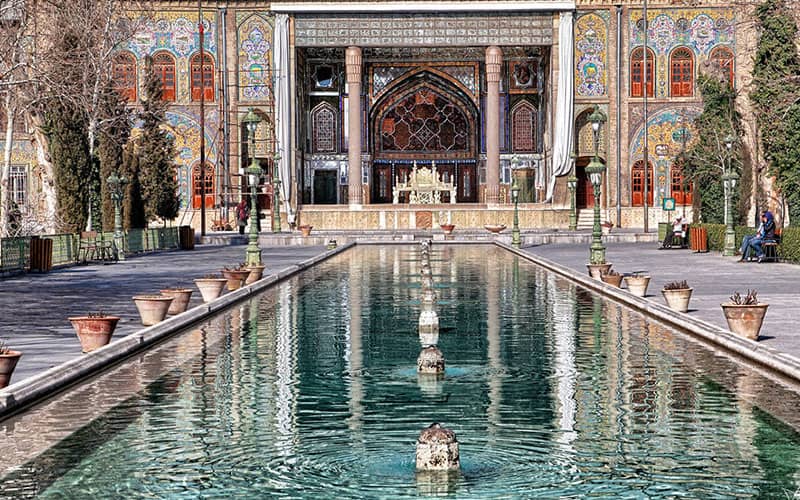
Gold-leaf decorations on stone surfaces are another aspect of the allure of Shams al-Amareh and the Marble Throne. During the Qajar period, the use of metal leaf in decorations, showcasing the skills of contemporary goldsmiths, adds to the value of this collection. The enduring use of gold in Golestan Palace’s architectural embellishments enhances its significance. In the following sections, we will explore the various parts of Golestan Palace.”
Shams al-Amareh
Perhaps the crown jewel of the Golestan Palace complex is Shams al-Amareh, a towering structure that stands out as one of its most prominent attractions and was once a symbol of the capital. Naser al-Din Shah, enamored by the towering structures of Europe during his European travels, ordered the construction of this building to ascend to its top with his women and enjoy the panoramic view of Tehran and its surroundings.
Built in 1284, this five-story building, with a height of 35 meters, was the tallest structure of its time. Shams al-Amareh was the first building in Iran to use metal in its construction, marking a significant transformation in architecture. In addition to its magnificent exterior, the interior decorations with mirror work and paintings are awe-inspiring.
Marble Throne Veranda
The Marble Throne Veranda, also known as the Daryalamarreh or Diwankhaneh, is the oldest historical building in the Golestan Palace dating back to the time of Karim Khan Zand. It shines as the gem of this collection with exquisite gypsum work, mosaic, stone carving, relief, lattice, and mirror work.
The most beautiful part of the veranda is the Marble Throne, constructed by the order of Fath Ali Shah. In 1221 AH, Fath Ali Shah commissioned Isfahani stonecutters to create a throne from yellow Yazd marble, consisting of 65 large and small marble pieces. The design of the throne invokes the image of Solomon’s Throne, adorned with three demons, six angels, or humans on its shoulders. In addition to a dragon and two lions, verses praising Fath Ali Shah are inscribed on this marble masterpiece.
Golestan Palace Courtyard
In addition to the various buildings showcasing their grandeur in the Golestan Palace complex, numerous trees, pools, and fountains surround these structures, providing a delightful space for strolling and photography. The vibrant tileworks and beautiful landscapes of each building contribute to the charm of the Golestan Palace courtyard.
Private Palaces
The private palaces of the Golestan Palace complex include the Salam Hall, Ivory Hall, Mirror Hall, Utensils Hall, and Brilliant Hall, each with its unique features.
Salam Hall
Salam Hall, also known as the Museum Room or Coronation Hall, is located in the northwest corner of the Golestan Palace and was originally built with the purpose of creating a museum. Naser al-Din Shah, inspired by the museums of Western countries, decided to establish a similar museum in this royal complex. Consequently, the old structures in this section of the garden were demolished, and rooms for the museum, pool, etc., were constructed. Thus, the first museum in Iran took shape within the Golestan Palace. Interestingly, the history of photography and museum organization in Iran dates back to the Qajar period.
The construction of Salam Hall and other sections was completed in 1293 AH, with the arrangement, installation of paintings, and completion of decorations continuing until 1296 AH. It appears that Naser al-Din Shah himself participated in the museum’s design.
Due to the ceremonies held in this place, it became known as the Salam Hall and later, due to the coronations of Pahlavi kings, it was recognized as the Coronation Hall.
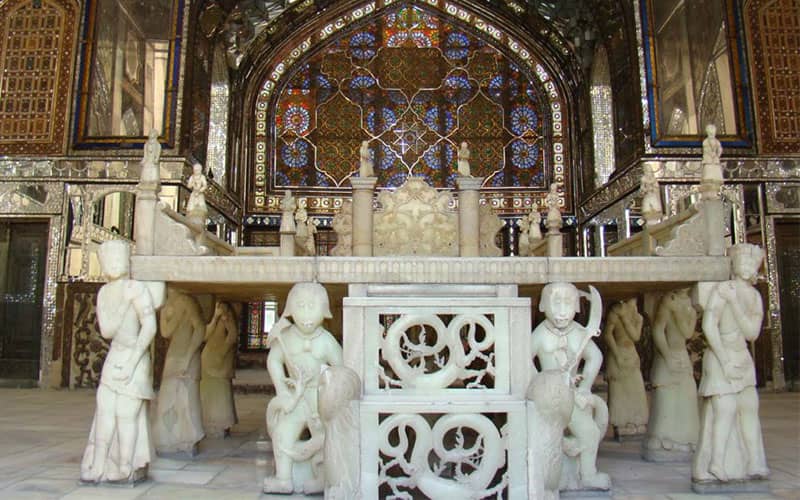
Special Museum
The Special Museum is a part of the pool of Salam Hall and houses precious objects left by the Qajar kings. Some of these objects were previously stored in Naser al-Din Shah’s museum room and date back to various periods of the Qajar era or were gifts from other kings and contemporary artists, or acquired by these kings themselves.
Art Gallery Museum
Another part of the Salam Hall pool is dedicated to the Art Gallery Museum, showcasing Iranian paintings from the Qajar period. The museum consists of two sections: the southern section displays painted curtains from the Qajar era by artists such as Mirza Baba Naqashbashi, Ismail Jalayer, Abolhasan Thani Ali Akbar Khan Mozayan al-Dawlah, among others. The northern section exhibits works of later Qajar painters like Mahmoud Khan Saba, Kamal al-Molk, Mosavar al-Molk, and Agha Mirza Mousavi. This museum started its activity in 1376 AH, merging the two sections.
Mirror Hall
The Mirror Hall is one of the famous halls of the Golestan Palace, located right next to the Salam Hall. The hall’s notability is attributed to the renowned painting by Kamal al-Molk of the Mirror Hall and Naser al-Din Shah, a masterpiece that took five years to complete. The interesting aspect of this painting is the vastness of the hall, which appears much larger than the actual hall when compared, demonstrating the artist’s skill in magnifying the grandeur of the hall.
Ivory Hall
Ivory Hall is another magnificent structure in the Golestan Palace, although the exact date of its construction is unknown. According to evidence, it was built before the Salam Hall and Mirror Hall. The peak of its beauty can be seen in the watercolor painting by Mahmoud Khan Malek al-Sho’ara, drawn in 1286 AH, depicting the exterior view of the hall. According to the painting, Ivory Hall had three large balconies, a portico with six columns, and a staircase. At present, two large ivory elephant statues are placed in this hall, possibly indicating the origin of its name. Some believe that it was used in the past for hosting and dining, and its correct name is ‘Aaj Hall,’ which in Turkish means ‘hungry.’
Utensils Hall
Utensils Hall was constructed in 1344 AH on the remains of a structure from the Qajar era. As the name implies, it is used to display some of the gifts from European kings to the Qajar kings. Among these gifts are the porcelain service related to the Napoleonic Wars, the jewelers’ service presented by Queen Victoria, the service presented by Alexander III, and more, making a visit to this hall worthwhile.
Brilliant Hall
Brilliant Hall is famous for its several rooms adorned with mirror work and chandeliers. Before the formation of Brilliant Hall, a Crystal Palace or Hall existed during the reign of Fath Ali Shah in this location. Due to its deterioration during Naser al-Din Shah’s era, the Crystal Hall was demolished, and the Brilliant Hall was built in its place. In addition to restoring the building during Muzaffar al-Din Shah’s era, beautiful decorations were added. An oil painting of this hall from before the restoration is kept in the Salam Hall.
Karim Khan’s Seclusion
Karim Khan’s Seclusion is situated in the northwest corner of the Golestan Palace, covered in the shape of a three-sided and columned portico with a beautiful pool in the center. The significance of this building is related to the events during Agha Mohammad Khan Qajar’s time. He exhumed Karim Khan Zand’s remains from their tomb in Shiraz and relocated them to this place. Since this location was the daily passage of the king at that time, by passing Karim Khan’s burial site, Agha Mohammad Khan could symbolically strike him.
The tombstone of Naser al-Din Shah and the Marble Throne of Fath Ali Shah are located in Karim Khan’s Seclusion. During Naser al-Din Shah’s time, it became a small courtyard known as ‘Heyat Karimkhani,’ used for the king’s rest. With the advent of Pahlavi I, Karim Khan’s bones were transferred to Qom.
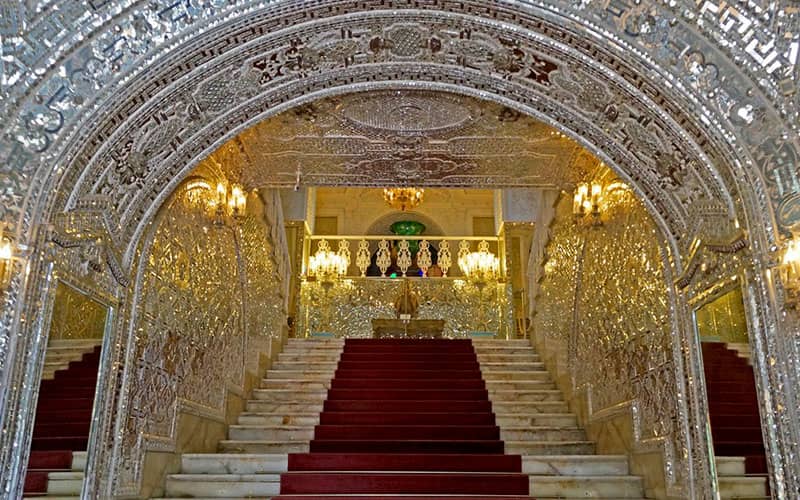
Two valuable pieces exist in Karim Khan’s Seclusion that has given them double importance. The tombstone of Naser al-Din Shah was initially placed in the holy shrine of Hazrat Abdul Azim (AS) and later moved to the Golestan Palace during the early days of the Islamic Revolution in Iran. Eventually, it found its place in Karim Khan’s Seclusion. On this stone, the image of Naser al-Din Shah with a sword in hand is carved.
In addition, the Marble Throne of Fath Ali Shah is also located in this place, even though it was previously in another part of the palace but was later moved to Karim Khan’s Seclusion during the Pahlavi era.
Karim Khan’s Seclusion Ticket Price: Free
Mansion of Windcatchers
The Mansion of Windcatchers is located on the southern side of the Golestan Palace complex. It was initially constructed during the reign of Fath Ali Shah and underwent significant changes during the era of Naser al-Din Shah, resulting in the structure we see today.
In addition to its beautiful arches, columns, and corridors, the mansion features remarkable decorations, including paintings, mirror work, stucco, woodcarving, and tile work. The most captivating part of the mansion is the Shah Neshin Hall with its nine arches, engraved alabaster columns, painted spiral columns, seven-color marquetry floor, and intricately painted walls and ceiling, which captivate the gaze of any observer.
Photography Museum
Diamond Hall
Diamond Hall is one of the ancient sections of the Golestan complex, situated after the Mansion of Windcatchers. Due to its interior mirror work, it is named “Diamond.” The mirror work designs in the southern alcove are remnants from the Fath Ali Shah era, representing the oldest part of this structure. The hall was commissioned by Fath Ali Shah, although during the reign of Naser al-Din Shah, alterations were made to its decorations and appearance. The hall consists of numerous corridors, upper chambers, and various platforms, with a large pool located beneath it.
The White Palace
The White Palace, initially designed to house the luxurious gifts sent by Sultan Abdul Hamid of the Ottoman Empire, was constructed in the southwest corner of the Golestan compound. After completing the palace, Naser al-Din Shah instructed that it be painted white in imitation of European architecture, and white marble was used for the stairs. Consequently, the new building became known as the White Palace.
After receiving the Ottoman Sultan’s gifts, this splendid hall was initially named the Abdul Hamid Hall. The White Palace served as the working place for prime ministers and the cabinet meetings of subsequent governments until 1347. Finally, in 1347, it was transformed into the Museum of Anthropology, displaying Qajar-era clothing as well as costumes from various regions of Iran.
Golestan Palace Library
The Golestan Palace Library consists of two parts: the Manuscript Library and the Printed Book Library.
The history of the library dates back to the early 13th century AH (Islamic calendar) when it was established by Fath Ali Shah Qajar, named the Shahanshahi Library. The printed book section started its operation during the Pahlavi era and was initially located on the first floor of the White Palace until it was moved to a larger space in the northeast corner in 1384. This library houses more than 700,000 historical, artistic, and lithographed books, with about 2,500 historical books from the Qajar period.
Golestan Palace offers a unique and rich experience for visitors, and if an in-person visit is not possible, a virtual tour is the best way to explore the cultural and historical heritage spanning centuries in this magnificent complex.
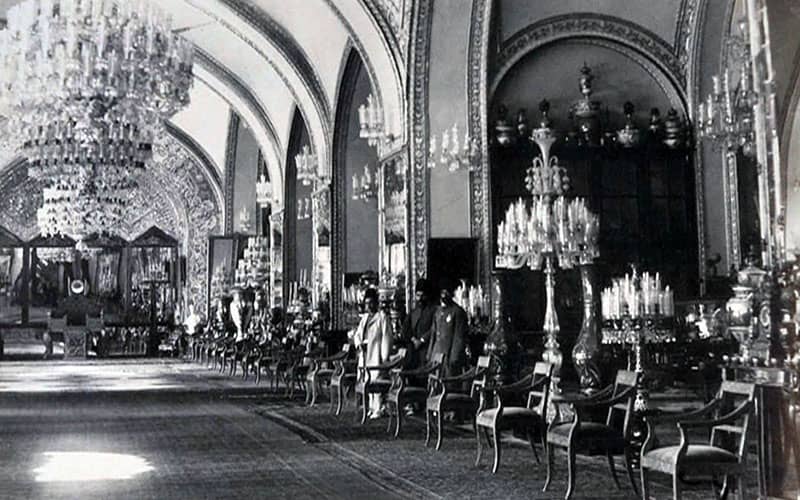
Facilities and Services at Golestan Palace
In addition to restroom facilities and a prayer room, during your visit to Golestan Palace, you can also make use of the tea house and photography section.
Golestan Palace Tea House: While exploring Golestan Palace, you can take a break at the tea house and enjoy aromatic herbal teas or delicious snacks for the utmost pleasure.
Photography in Qajar Era Atmosphere: Throughout your visit to Golestan Palace, visit the photography booth and create a lasting memory by dressing up in Qajar-era costumes.
Frequently Asked Questions:
Where is Golestan Palace located?
Golestan Palace is one of Tehran’s most famous attractions, with a history dating back decades before the Qajar era, spanning over 440 years. It is situated on 15 Khordad Street, north of Arg Square.
What are the visiting hours for Golestan Palace?
From 9 AM to 7 PM (ticket sales until 5:15 PM), Golestan Palace is open. It is closed on the following occasions: the departure anniversary of Imam Khomeini (June 4), the martyrdom of Imam Ali (21st of Ramadan), Tasua and Ashura (9th and 10th of Muharram), Arbaeen (20th of Safar), the departure of Prophet Muhammad (PBUH), and the martyrdom of Imam Jafar Sadiq (25th of Shawwal), as well as Nature Day (April 2).
What is the ticket price for Golestan Palace?
The entrance fee for Golestan Palace is 46,000 Iranian Rials for each Iranian visitor (as of 2023).
What sections does Golestan Palace include?
Golestan Palace is a historical complex comprising several palaces and royal halls, including Shams al-Amareh, Marble Throne Veranda, Golestan Palace Courtyard, Exclusive Palace, Kharimkhani Nook, Windcatchers Mansion, Diamond Hall, and the White Palace, all set within a beautiful garden.

